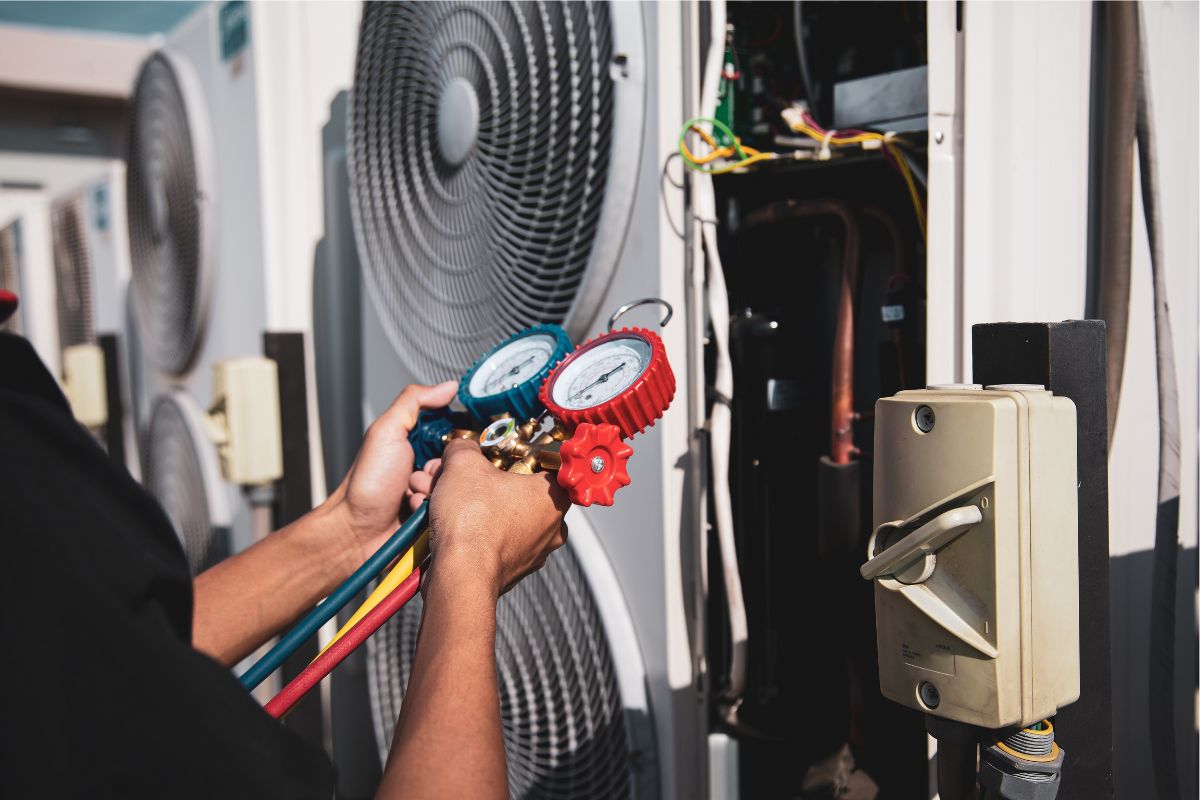With commercial heating and cool equipment, it’s essential to the life and performance of your HVAC unit to take heat exchanger cracks seriously — don’t dismiss the dangers of damage to this crucial component.
Any crack in the heat exchanger of your commercial HVAC system or furnace is a serious safety hazard. Despite the fact that your furnace appears to be in good working order, dangerous gases could leak into your commercial building or office space and cause serious health problems for building occupants.
In this article, we’ll discuss what exactly your commercial HVAC system’s exchanger actually does, as well as the steps you can take to identify cracks and arrange for prompt professional maintenance to get your equipment back up and running safely.
Contents
- What Is a Heat Exchanger?
- How Can I Tell If My Heat Exchanger Is Cracked?
- Air Ideal and Emergency Commercial HVAC Repair
What Is a Heat Exchanger?
The heat exchanger is the HVAC component of the furnace that is responsible for heating the air. It is made up of a series of tubes or coils that are looped repeatedly through the airflow inside the furnace in order to heat the air inside. The shape of your furnace’s coils is determined by the type or model of furnace you have.
If there is a possibility that your heat exchanger is cracked, don’t ignore the situation. The gases being burned off, such as carbon monoxide, sulfur dioxide, and nitrous oxide, could leak into your space if this component develops a crack, posing major health risks to building occupants.
How Can I Tell If My Heat Exchanger Is Cracked?
There are a number of common symptoms of a cracked heat exchanger to look out for. If you notice soot on the inside or perimeter of your furnace, which is actually a black carbon buildup, it’s a sign your furnace isn’t burning cleanly. Soot is usually produced as a result of incomplete combustion, and improperly adjusted burners or a cracked exchanger are two possible causes.
Additionally, if you notice other furnace components are corroded and/or cracked, this is often a sign of general wear-and-tear, and your heat exchanger should be inspected for proper operation. Remember that stress cracks are fairly common and can occur as a result of components expanding and contracting during heating and cooling.
Finally, if you notice strange odors emitting from your commercial HVAC system or furnace in particular, a cracked heat exchanger may be the culprit, which may frequently waft a strong, unpleasant odor similar to formaldehyde. You may experience headaches as well as other physical symptoms as a result of it.
Air Ideal and Emergency Commercial HVAC Repair
Worried that your commercial HVAC system may be suffering from a cracked heat exchanger? Contact the Air Ideal team today to arrange for prompt support and the expertise necessary to repair your equipment quickly and efficiently.



